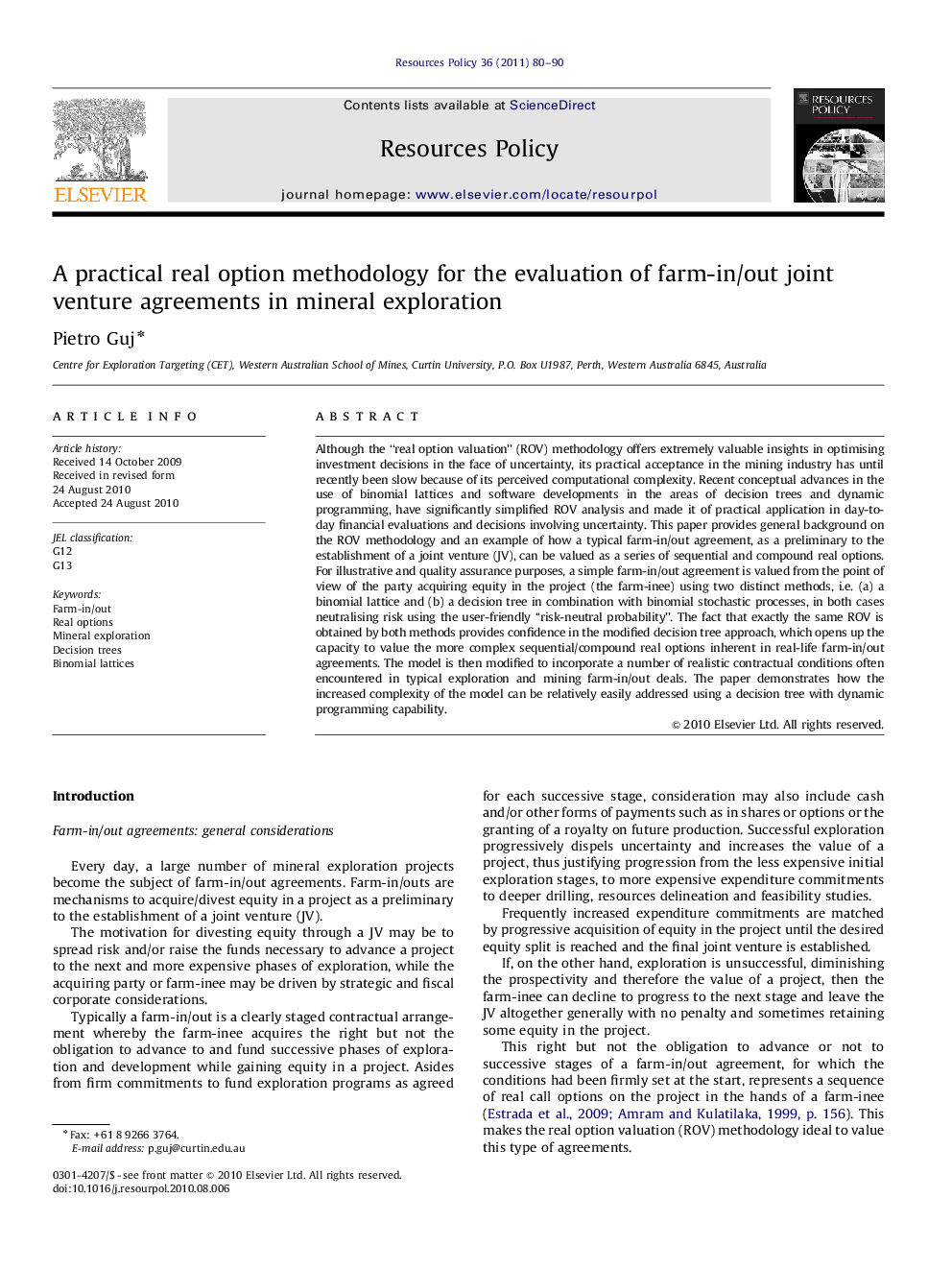| Article ID | Journal | Published Year | Pages | File Type |
|---|---|---|---|---|
| 986182 | Resources Policy | 2011 | 11 Pages |
Although the “real option valuation” (ROV) methodology offers extremely valuable insights in optimising investment decisions in the face of uncertainty, its practical acceptance in the mining industry has until recently been slow because of its perceived computational complexity. Recent conceptual advances in the use of binomial lattices and software developments in the areas of decision trees and dynamic programming, have significantly simplified ROV analysis and made it of practical application in day-to-day financial evaluations and decisions involving uncertainty. This paper provides general background on the ROV methodology and an example of how a typical farm-in/out agreement, as a preliminary to the establishment of a joint venture (JV), can be valued as a series of sequential and compound real options. For illustrative and quality assurance purposes, a simple farm-in/out agreement is valued from the point of view of the party acquiring equity in the project (the farm-inee) using two distinct methods, i.e. (a) a binomial lattice and (b) a decision tree in combination with binomial stochastic processes, in both cases neutralising risk using the user-friendly “risk-neutral probability”. The fact that exactly the same ROV is obtained by both methods provides confidence in the modified decision tree approach, which opens up the capacity to value the more complex sequential/compound real options inherent in real-life farm-in/out agreements. The model is then modified to incorporate a number of realistic contractual conditions often encountered in typical exploration and mining farm-in/out deals. The paper demonstrates how the increased complexity of the model can be relatively easily addressed using a decision tree with dynamic programming capability.
